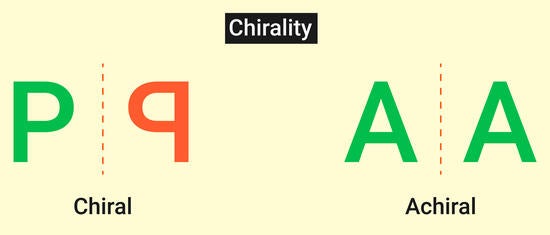- 宇宙初期に並んだ銀河の列から、宇宙の基本的な構造に関する手がかりと疑問が明らかになった。
A string of lined-up galaxies in the early universe reveals clues – and questions – about the fundamental architecture of the universe.
- ASPIRE(アスパイア:電離時代における偏ったハローの分光サーベイ): JWSTが発見したz=6.61クェーサー周辺のフィラメント構造 A SPectroscopic Survey of Biased Halos in the Reionization Era (ASPIRE): JWST Reveals a Filamentary Structure around a z = 6.61 Quasar
- ASPIRE(アスパイア): 再電離期の偏光ハローの分光サーベイ: JWSTによるz > 6.5クェーサーのレストフレーム光学スペクトルの初観測 A SPectroscopic Survey of Biased Halos in the Reionization Era (ASPIRE): A First Look at the Rest-frame Optical Spectra of z > 6.5 Quasars Using JWST
宇宙初期に並んだ銀河の列から、宇宙の基本的な構造に関する手がかりと疑問が明らかになった。 A string of lined-up galaxies in the early universe reveals clues – and questions – about the fundamental architecture of the universe.
2023-06-29 アリゾナ大学
◆これは初めてこのような構造が観測されたものであり、宇宙の6%の時点でありました。また、この発見は、初期の超巨大ブラックホールの形成や星の形成に対する影響についても重要な手がかりを提供しています。
関連情報>
- https://news.arizona.edu/story/uarizona-astronomers-identify-earliest-strands-cosmic-web
- https://iopscience.iop.org/article/10.3847/2041-8213/accd6f
- https://iopscience.iop.org/article/10.3847/2041-8213/acc9c8
ASPIRE(アスパイア:電離時代における偏ったハローの分光サーベイ): JWSTが発見したz=6.61クェーサー周辺のフィラメント構造 A SPectroscopic Survey of Biased Halos in the Reionization Era (ASPIRE): JWST Reveals a Filamentary Structure around a z = 6.61 Quasar
Feige Wang, Jinyi Yang, Joseph F. Hennawi, Xiaohui Fan, Fengwu Sun, Jaclyn B. Champagne, Tiago Costa, Melanie Habouzit, Ryan Endsley, Zihao Li, Xiaojing Lin, Romain A. Meyer, Jan–Torge Schindler, Yunjing Wu, Eduardo Bañados, Aaron J. Barth, Aklant K. Bhowmick, Rebekka Bieri, Laura Blecha, Sarah Bosman, Zheng Cai, Luis Colina, Thomas Connor, Frederick B. Davies, Roberto Decarli, Gisella De Rosa, Alyssa B. Drake, Eiichi Egami, Anna-Christina Eilers, Analis E. Evans, Emanuele Paolo Farina, Zoltan Haiman, Linhua Jiang, Xiangyu Jin, Hyunsung D. Jun, Koki Kakiichi, Yana Khusanova, Girish Kulkarni, Mingyu Li, Weizhe Liu, Federica Loiacono, Alessandro Lupi, Chiara Mazzucchelli, Masafusa Onoue, Maria A. Pudoka, Sofía Rojas-Ruiz, Yue Shen, Michael A. Strauss, Wei Leong Tee, Benny Trakhtenbrot, Maxime Trebitsch, Bram Venemans, Marta Volonteri, Fabian Walter, Zhang-Liang Xie, Minghao Yue, Haowen Zhang, Huanian Zhang, and Siwei Zou
The Astrophysical Journal Letters Published 2023 June 29
DOI:10.3847/2041-8213/accd6f

Abstract
We present the first results from the JWST program A SPectroscopic survey of biased halos In the Reionization Era (ASPIRE). This program represents an imaging and spectroscopic survey of 25 reionization-era quasars and their environments by utilizing the unprecedented capabilities of NIRCam Wide Field Slitless Spectroscopy (WFSS) mode. ASPIRE will deliver the largest (~280 arcmin2) galaxy redshift survey at 3–4 μm among JWST Cycle 1 programs and provide extensive legacy values for studying the formation of the earliest supermassive black holes, the assembly of galaxies, early metal enrichment, and cosmic reionization. In this first ASPIRE paper, we report the discovery of a filamentary structure traced by the luminous quasar J0305–3150 and 10 [O iii] emitters at z = 6.6. This structure has a 3D galaxy overdensity of δgal = 12.6 over 637 cMpc3, one of the most overdense structures known in the early universe, and could eventually evolve into a massive galaxy cluster. Together with existing VLT/MUSE and ALMA observations of this field, our JWST observations reveal that J0305–3150 traces a complex environment where both UV-bright and dusty galaxies are present and indicate that the early evolution of galaxies around the quasar is not simultaneous. In addition, we discovered 31 [O iii] emitters in this field at other redshifts, 5.3 < z < 6.7, with half of them situated at z ∼ 5.4 and 6.2. This indicates that star-forming galaxies, such as [O iii] emitters, are generally clustered at high redshifts. These discoveries demonstrate the unparalleled redshift survey capabilities of NIRCam WFSS and the potential of the full ASPIRE survey data set.
ASPIRE(アスパイア): 再電離期の偏光ハローの分光サーベイ: JWSTによるz > 6.5クェーサーのレストフレーム光学スペクトルの初観測 A SPectroscopic Survey of Biased Halos in the Reionization Era (ASPIRE): A First Look at the Rest-frame Optical Spectra of z > 6.5 Quasars Using JWST
Jinyi Yang, Feige Wang, Xiaohui Fan, Joseph F. Hennawi, Aaron J. Barth, Eduardo Bañados, Fengwu Sun, Weizhe Liu, Zheng Cai, Linhua Jiang, Zihao Li, Masafusa Onoue, Jan-Torge Schindler, Yue Shen, Yunjing Wu, Aklant K. Bhowmick, Rebekka Bieri, Laura Blecha, Sarah Bosman, Jaclyn B. Champagne, Luis Colina, Thomas Connor, Tiago Costa, Frederick B. Davies, Roberto Decarli2 Gisella De Rosa, Alyssa B. Drake, Eiichi Egami, Anna-Christina Eilers, Analis E. Evans, Emanuele Paolo Farina, Melanie Habouzit, Zoltan Haiman, Xiangyu Jin, Hyunsung D. Jun, Koki Kakiichi, Yana Khusanova, Girish Kulkarni, Federica Loiacono, Alessandro Lupi, Chiara Mazzucchelli, Zhiwei Pan, Sofía Rojas-Ruiz, Michael A. Strauss, Wei Leong Tee, Benny Trakhtenbrot, Maxime Trebitsch, Bram Venemans, Marianne Vestergaard, Marta Volonteri, Fabian Walter, Zhang-Liang Xie, Minghao Yue, Haowen Zhang, Huanian Zhang, and Siwei Zou
The Astrophysical Journal Letters Published 2023 June 29
DOI:10.3847/2041-8213/acc9c8
Abstract
Studies of rest-frame optical emission in quasars at z > 6 have historically been limited by the wavelengths accessible by ground-based telescopes. The James Webb Space Telescope (JWST) now offers the opportunity to probe this emission deep into the reionization epoch. We report the observations of eight quasars at z > 6.5 using the JWST/NIRCam Wide Field Slitless Spectroscopy as a part of the “A SPectroscopic survey of biased halos In the Reionization Era (ASPIRE)” program. Our JWST spectra cover the quasars’ emission between rest frame ∼4100 and 5100 Å. The profiles of these quasars’ broad Hβ emission lines span a full width at half maximum from 3000 to 6000 km s−1. The Hβ-based virial black hole (BH) masses, ranging from 0.6 to 2.1 billion solar masses, are generally consistent with their Mg ii-based BH masses. The new measurements based on the more reliable Hβ tracer thus confirm the existence of a billion solar-mass BHs in the reionization epoch. In the observed [O iii] λλ 4960,5008 doublets of these luminous quasars, broad components are more common than narrow core components (≤ 1200 km s−1), and only one quasar shows stronger narrow components than broad. Two quasars exhibit significantly broad and blueshifted [O iii] emission, thought to trace galactic-scale outflows, with median velocities of −610 and −1430 km s−1 relative to the [C ii] 158 μm line. All eight quasars show strong optical Fe ii emission and follow the eigenvector 1 relations defined by low-redshift quasars. The entire ASPIRE program will eventually cover 25 quasars and provide a statistical sample for the studies of the BHs and quasar spectral properties.



